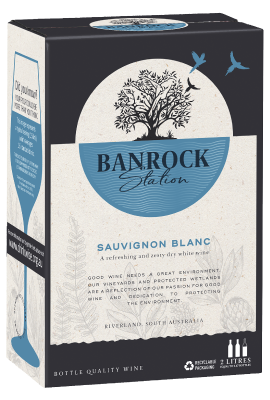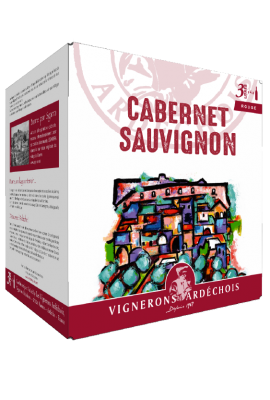Why should we buy bag in box wines
Box wine – or ‘bag in box’ – has enjoyed a recent surge in demand, which suggests that consumer habits and perceptions may be changing.
In 2020, supermarket Sainsbury’s reported that sales of bag-in-box wines jumped by 41% year-on-year for the lockdown period. 28% of those buying them were aged between 25 and 34 years old.
‘Lockdown gave bag-in-box wine a real opportunity to shine,’ said Sainsbury’s wine buyer Hugh Browne.
Not restricted to the value end of the market, we are also seeing an increasing number of premium wines which tick boxes such as organic, biodynamic and natural.
Whilst you’re unlikely to find the world’s finest wines in pouches or boxes any time soon, some bag-in-box wines present good value. They also preserve wines longer than open bottles and are more portable – making them great picnic wines.
That said, it definitely pays to be selective. But, which ones should you be buying?
Key benefits of box wine
I took a box of Caja Roja to Glastonbury festival a couple of years ago. The reason? Portability. Even the smallest boxes or pouches are equivalent to two bottles of wine, they are easier to carry than bottles, and there is no risk of breakage.
Perhaps the most attractive benefit for the average consumer, however, is the price. Because cardboard and plastic is lighter than glass, and the volumes per unit are larger, packaging and transportation costs are reduced. According to Tom Craven of Vinnaturo, the cost saving passed on to the consumer can be as much as 30%.
However, tap-based formats, including bag in box, are not designed for ageing wine.
Keep them for too long and the young, fruity wine that is invariably sold in this format will begin to fade.
Thanks to clever design, though, they are very effective at retaining freshness for longer than an opened bottle. This is particularly useful for those who only want the occasional glass.
How long does bag in box wine last?
The on-trade
Bars and restaurants prize ease of service, freshness and cost, which has seen more and more establishments turn to bag in box, key kegs and petainers as alternatives to glass bottles, especially for their house pours.
Trevor Gulliver, of St John, the only Michelin starred restaurant currently serving bag in box wines, told Decanter.com, ‘We were shipping and recycling a lot of glass – not the most ecological of practices, and it didn’t make sense for the less expensive wines. Bag in box wines are a great and practical format at a better price than the bottled equivalent.’
Colin Grandfield, of The Winemakers Club, notes that consumer perception is changing, ‘It is becoming more and more common for wine bars and restaurants to offer wines by the glass both from bag in box and in kegs on draught.
‘I think that consumers now recognise that, rather than this being an inferior product, they are getting better value for money from these formats than from a bottle.’
Premiumisation of box wine
In the past the bag in box format has been synonymous with low quality bulk wine, but a trend towards premiumisation is taking grip.
Vinnaturo and Le Grappin are among the frontrunners of this movement in the UK, the former offering wines from a range of winemakers as eclectic (and delicious) as a skin contact Trebbiano, while the latter offers more traditional but super-fresh wines from their own vineyards in Mâcon and Beaujolais.
Both sell 1.5l pouches (effectively naked bag in boxes), which Le Grappin has cleverly dubbed the ‘bagnum’, as well as larger boxes.
Kirsty Tinkler, formerly of Great Queen Street restaurant in Covent Garden, began running bag in box pop-ups in the capital after she was won over by the quality on offer from small, low intervention producers.
She told Decanter.com in 2017 that although wine on tap is becoming mainstream within the London on-trade, a gap still exists in retail, particularly at the premium end of the market.
Tinkler opened a permanent site in East London a few years ago, called Weino BIB, which aims to be a shrine to artisanal wines served from all kinds of ‘eco’ formats.
Here to stay?
Bag in box and all its tap-based variants have a genuine reason for being in the 21st century.
These formats address some of the ecological, financial and qualitative issues around wine; even if they don’t have the same visual or romantic appeal as a traditional wine bottle, and aren’t really suitable for ageing wines.
Growth at the premium end will only widen the appeal and encourage more producers and retailers to get on-board.
Bag in box wines have a particular role to fill, one that’s different to the glass bottle, which I can’t see dying out any time soon.
See our ratings of 27 pouch & bag in box wines:
Recommendation from WeWine 
Related posts
-
-
Explore the best wines for this Summer Vacation 2022
-
We invite you to celebrate with us this special occasion of the Malbec World Day and every day with three great wines from Doña Paula:
-
-
-
-
-
Copyright © 2020 by WeWine
You must be over 18 to consume alcohol | Sitemap


























